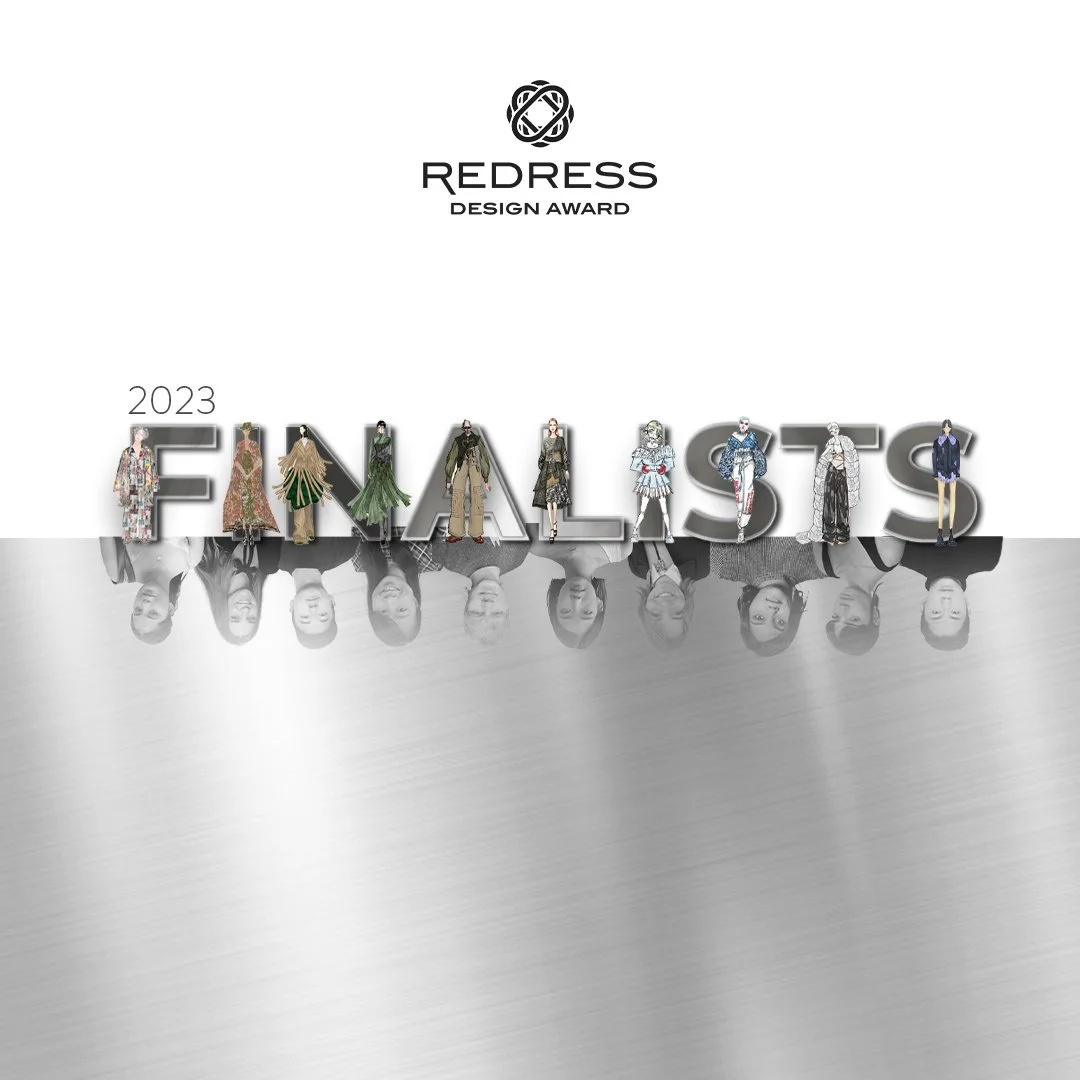Wen Hanzhang
“MY FOCUS IS ON HOW WE CAN SPEAK FOR SUSTAINABILITY IN FASHION THROUGH DURABLE MATERIALS AND EXPERIMENTING WITH TECHNIQUES SUCH AS LOW WASTE AND MODULAR DESIGN.”
– WEN HANZHANG
In the eyes of Wen Hanzhang, a mathematician turned fashion designer, the creation of garments can be seen as a systematic project of discovering shapes to reduce waste.
His Redress Design Award collection, ‘The Living Island’, imagines life on a future island. Marine life, island topography, and the practice of recycling inspire the designs.
“It all came from the concept of living on a future island where people can only use limited sources around them, such as wasted or preexisting material, used products, etc. to produce new things with their creativity,” says the designer, who is studying for his MA in Fashion Design – Womenswear from Istituto Marangoni Paris, from which he also holds a BA in Fashion Design, alongside a DEC diploma in Fashion Design from Collège LaSalle, Canada.
Using leftover fabrics and secondhand clothes sourced from a local thrift shop in the designer’s home of Montreal, the Chinese Canadian designer creates with monofibre materials to ensure his garments are recyclable. Their modular design also makes it simple for wearers to repair parts with new pieces, while detachable sleeves and legs offer versatility in styling options.
Hanzhang was inspired by tessellation to deal with the challenges of designing organic shapes that are feasible for cutting and sewing. He also integrates recycled duvets as filling that can work with irregular outer shells. He achieves low-waste cutting while combining organic and geometric shapes using patchwork, a signature element of his designs. The garments also feature pockets and zippers, offering functionality that can lead to longevity of use.
Hanzhang dreams of creating a community platform promoting humanity-driven designs. “Making garments will remain my passion and part of my profession. I will continue to create meaningful pieces with recycled material to convey messages about human collectivity.”
Congratulations to Redress for successfully organising the Redress Design Award 2023.
Enjoy the Redress Design Award 2023 Finalists’ collections in this digital exhibition and discover more about their inspirations and techniques.
We would like to thank all of our sponsors and partners, without whom the Redress Design Award would not be possible.
At Redress, we truly believe the future of fashion is circular. To help accelerate that change, we offer free online resources for fashion designers and professionals to support them on the path to creating fashion more sustainably, and give them an edge in the fast-changing fashion industry.
Juliana Garcia Bello was the winner of the Redress Design Award 2020 Womenswear category. We caught up with the designer to hear about her journey with the competition and beyond.
An exciting array of prizes and career-enhancing opportunities awaits for the winners of the Redress Design Award.
From start to finish, each exhilarating cycle of the Redress Design Award cultivates up-and-coming designers with education, expertise, and exposure, propelling the next generation into a circular future for fashion.
Selected from around the globe for their subject expertise, each year our judges look for standout applications demonstrating skills in creativity, sustainability, and marketability.
After winning the Redress Design Award 2022, Federico Badini Confalonieri began working with the Timberland design team in Europe to collaborate on their upcoming Earth Day capsule collection.
The editorial photoshoot of the Redress Design Award 2023, titled ‘Reflection’, invites us to ponder the rising textile waste crisis and look towards sustainable solutions.
Stay ahead of the curve with the latest sustainability insights from the fashion industry with Redress’ curated selection of reports, podcasts, books, websites, and videos.
Step through the looking glass with the Redress Design Award 2023 Finalists: with circular design techniques, creativity, and innovation, these nine emerging talents from around the world tackle and transform everyday waste streams into a gallery of exquisite looks.
“My focus is on how we can speak for sustainability in fashion through durable materials and experimenting with techniques such as low-waste and modular design.” – Wen Hanzhang
“Fashion can be a powerful platform for advocating for a sustainable and equitable world for all.” – Ruwanthi Gajadeera
“It’s always been exciting to work with waste, exploring different innovative design solutions that challenge traditional practices and inspire a more conscious approach to fashion consumption.” – Pavneet Kaur






























